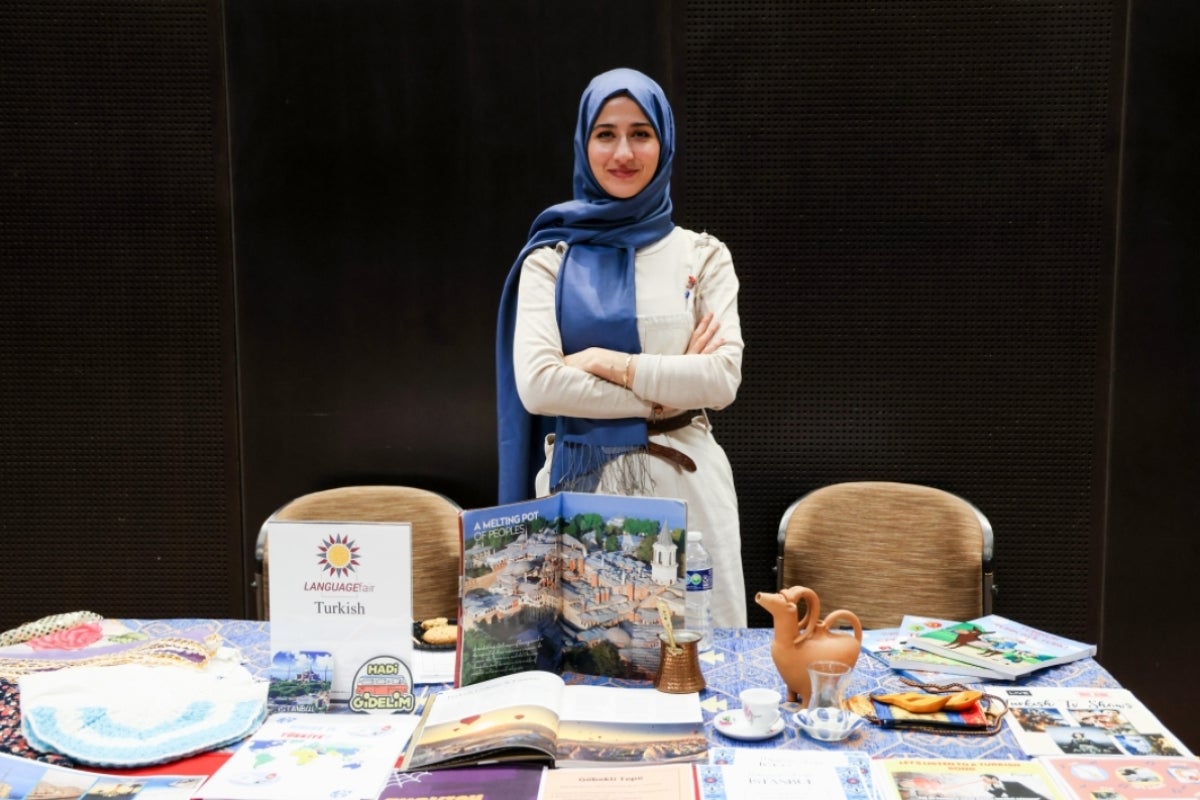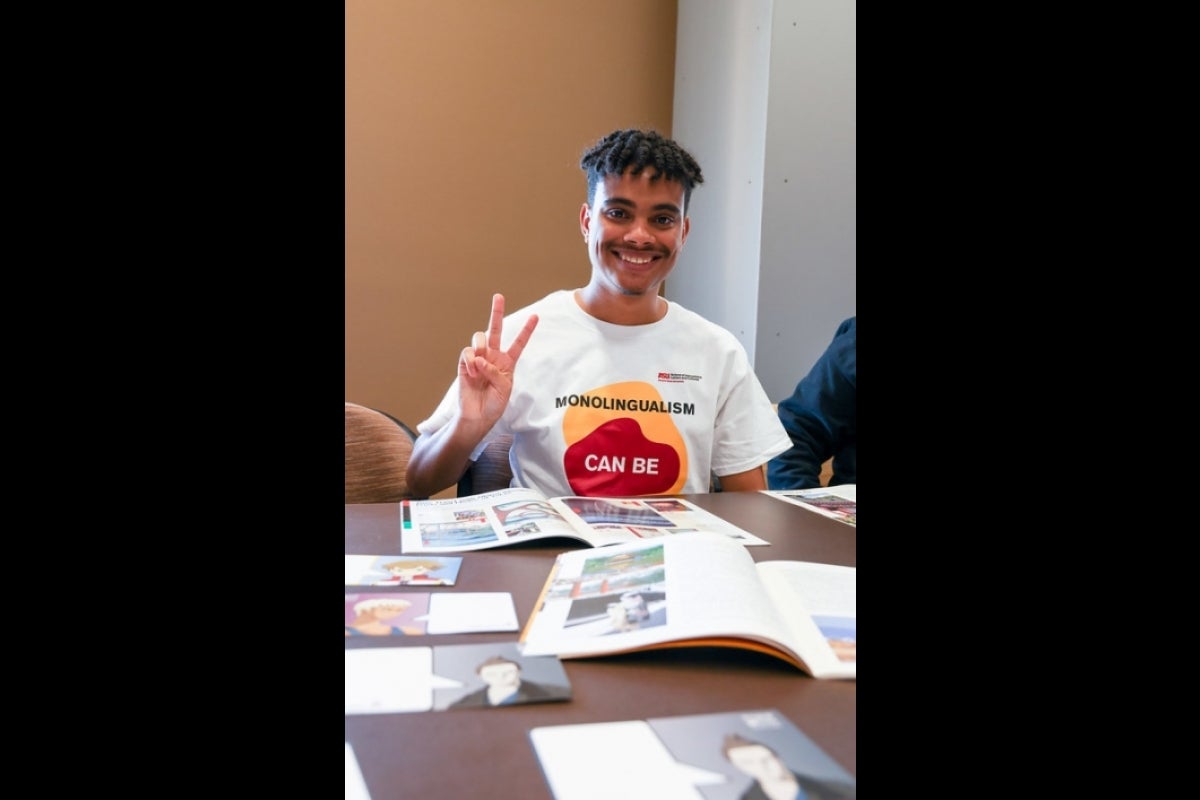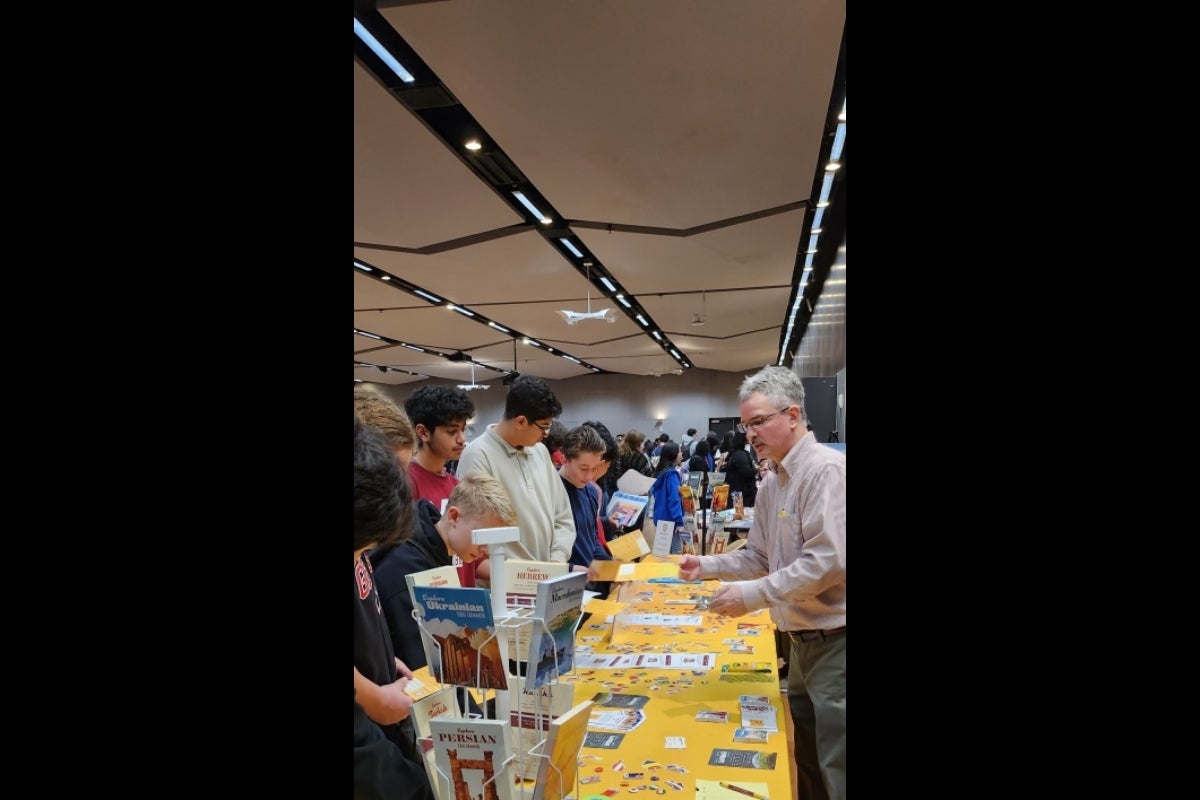ASU Language Fair showcases diverse language programs to Arizona high school students

Student volunteers demonstrated the art of calligraphy at this year's fair. Photo courtesy the School of International Letters and Cultures
After two years of the event being held virtually due to COVID-19, the School of International Letters and Cultures at Arizona State University held its annual Language Fair in person this spring at the Memorial Union on the Tempe campus.
The Language Fair is a longstanding event that highlights the various language programs ASU offers, showcasing various cultures, foods, dances and traditions as a way to engage high school students in expanding their global appreciation and knowledge.
The theme of this year's event was comics and animation, which was reflected in displays and a variety of activities that included a scavenger hunt and interactive lessons taught by ambassadors from each language department. Students had the opportunity to learn how to sign their name using American Sign Language, learn about Korean culture by adorning a traditional Hanbok, have their name written in calligraphy and more. They were also given the opportunity to learn more about the languages and programs that ASU provides through a “passport” activity that tasked them with collecting stamps from various tables to simulate an “around the world” experience only possible through an in-person event.
“Our traditional 'on-ground' Language Fair is a completely different experience from the last couple we held online," said Paul Arena, a classics lecturer at ASU and this year’s Language Fair coordinator. "We did the best we could to try to give students the same experience virtually the last few years, but there really is no substitute for face-to-face interaction at the live event. The energy and excitement of the high school students and teachers at this year’s event was remarkable!”
Competitions for dioramas, posters, dramatic performances and language contests are other significant components of the Language Fair. High school students were given the opportunity to learn about different languages and cultures and show off their prior knowledge through a myriad of activities organized by the hardworking faculty, staff and volunteers from the School of International Letters and Cultures.
“The Language Fair is an incredibly important event to broaden the horizons of Arizona's up-and-coming young adults,” said Senior Lecturer Bradley Wilson, who has taught Japanese in ASU's School of International Letters and Cultures for 17 years. “While Spanish, French and German are often taught in high schools, it is vital to show students that there are a plethora of languages out there to study. Each of these languages comes with their own unique cultures and intricacies that can delight and inspire.”
Many of the student volunteers who tabled at the event were exemplars that displayed how the Language Fair inspires and creates possibilities for high school students as they consider their higher education studies. Michael Shannon, a fourth-year global studies student minoring in Japanese, tended the Japanese table at the Language Fair. His interest in Japanese was solidified by his own experience attending the Language Fair as a high school student.
“I was a high school senior four years ago that attended this event and competed in the Japanese competition,” Shannon said. “My experience motivated me to attend ASU and take as many Japanese courses as possible. It was a catalyst for not only going to ASU but also continuing my language studies into adulthood. Showing off our SILC programs is essential to keeping our programs healthy.”
Shannon, who plans to teach English in Japan and aspires to one day work for the U.S. State Department, was able to turn his original interest in Japanese, which developed from exposure to Japanese language and culture from his childhood friend, into a passionate academic pursuit. While his Japanese coursework is rigorous and challenging, his experience learning the language has only cemented his understanding of the importance of language and cultural studies.
“In my opinion, language is a core part of the humanities. It is a vital part of culture and the expression of ideas and emotions. To study a language is to study the soul of cultures and even individual people,” Shannon said. “Everyone can use language to express themselves uniquely and to reproduce cultural practices. It's fluid. Without language, body language and sign language included, we are unable to expressively be human.”
More Arts, humanities and education

Honoring innovative practices, impact in the field of American Indian studies
American Indian Studies at Arizona State University will host a panel event to celebrate the release of “From the Skin,” a…

ASU alum's humanities background led to fulfilling job with the governor's office
As a student, Arizona State University alumna Sambo Dul was a triple major in Spanish, political science and economics. After…

ASU English professor directs new Native play 'Antíkoni'
Over the last three years, Madeline Sayet toured the United States to tell her story in the autobiographical solo-…




